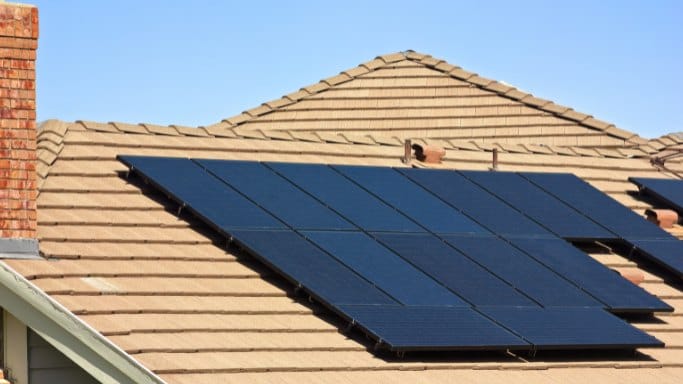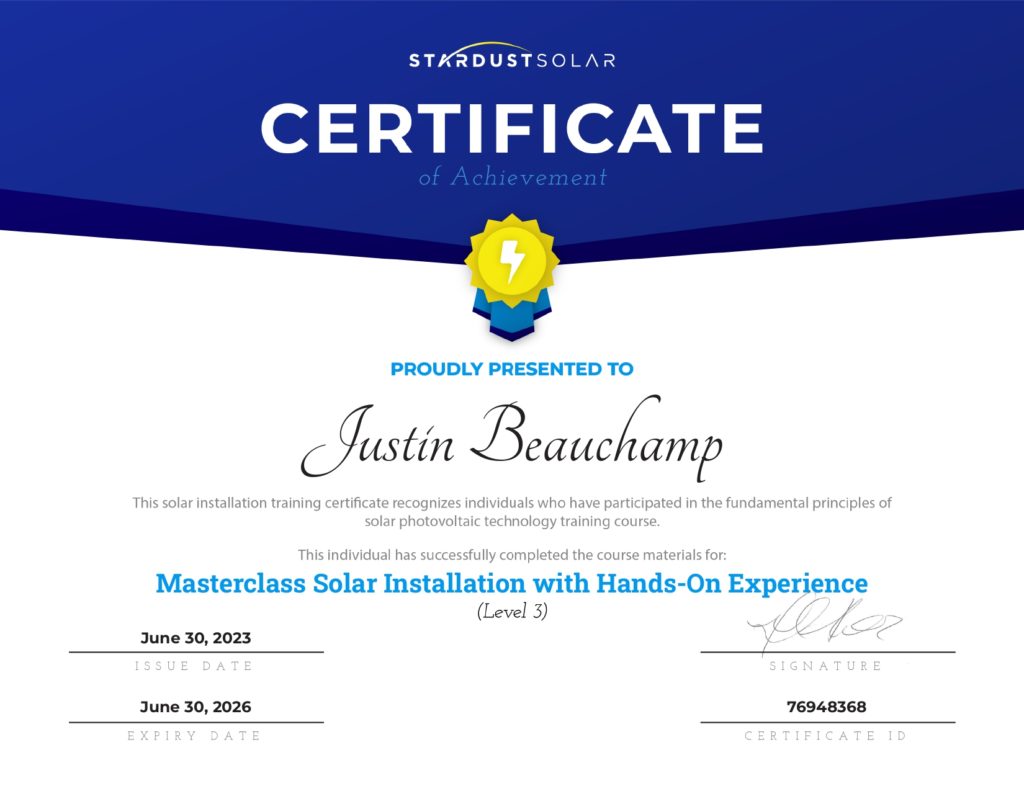Solar power is becoming more popular in Canada as homeowners seek ways to lower their electricity bills. With improved PV technology and financial incentives, choosing the right system size is essential.
One of the more extensive residential options is a 20 kW panel. Systems of this scale are also significant investments, but they may provide a healthy return. This raises the question: Is a 20-kilowatt system enough to power my home?
There are many things to consider before you can tell if it is enough to meet your household’s electric demands. This discussion will help you decide if a 20-kilowatt system is right for your home and if it’s really the perfect time to start looking for reliable “solar panel companies near me.”
Potential Power Output
Multiple factors determine a system’s electric output. Understanding these factors helps homeowners estimate PV performance and benefits.
What to Consider
Sun Irradiance
Irradiance is the amount of output received per unit area. The measurement of kWh/m² varies considerably based on location, climate, and weather conditions. Sun generation is higher in regions with more sunny days or clearer skies.
- 20 kW solar pv systems in a high-irradiance region may produce solar energy of 24,000 to 28,000 kWh annually.
- However, areas with lower irradiance may have an annual output capacity below this range.
- Understanding local irradiance can help predict electric generation.
System’s Efficiency
- Panel Efficiency. This is how well the panels convert sunlight into electricity. Modern panels are 15%–22% efficient. High-efficiency panels maximize output in limited space by converting more sunlight into electricity.
- Inverter Efficiency. PV panels produce direct current (DC), but inverters change that into alternating current (AC) that homes can use. Typically, inverter efficiencies fall within the 95% to 98% range. High-efficiency inverters reduce conversion losses, making more electricity usable.
Together, these efficiencies affect panel performance level. Given equal conditions, systems with high-efficiency panels and inverters will generate more electricity.
Shading and Orientation
| Factor | Description | Optimization Tips |
| Shading | Trees, buildings, and other obstructions can block sunlight from reaching panels | Conduct thorough site assessment and optimize panel placement to minimize shading |
| Orientation | Panels should face true south in the Northern Hemisphere for maximum sunlight | Tilt panels at an angle corresponding to your latitude for better performance |
Net Metering
Net metering allows homeowners to receive credits for any excess solar-based output they feed. When the production rate generated exceeds the household’s needs, it is sent to the utility grid. In return, the homeowner receives a credit on their utility bill for the surplus current contributed.
- Lower Electricity Costs. Homeowners can cut electricity costs by offsetting grid output with excess credits. Credit exceeding grid power can result in a zero or negative electricity bill.
- Enhanced Financial Savings. Selling excess outputs to the grid can help cover installation costs and generate extra income. This benefit may appeal to homeowners seeking maximum ROI.
What Can a 20 kW System Run
Household Appliances
Panels with 20 kilowatts can provide large households with extensive electrical needs. Efficient panels can supply these appliances and systems:
- Air Conditioning and Heating. Can support energy-intensive air conditioning and heating systems in homes with multiple units or high cooling and heating needs.
- Large Appliances. This includes fridges, ovens, washers, and dryers. This setup makes appliances run efficiently without straining the electrical system.
- Multiple Electronic Devices. Can turn on computers, TVs, and entertainment systems in households with many electronic devices.
Additional Uses
- Electric Vehicle (EV) Charging. Home EV charging becomes more important as electric vehicles become popular. A 20 kilowatts unit can charge one or more EVs depending on battery capacity and charging needs.
- Home Office Equipment. Working from home is possible with a 20,000-watt setup that powers computers, printers, and other equipment in dedicated personal offices.
- High-Power-Consuming Devices. This includes hot tubs, pool pumps, and other devices.
Situations Affecting 20 kW System Coverage
House Size and Condition
Solar panel installations with 20 kilowatts benefit large homes. This size configuration can handle large electrical loads in large homes with:
- multiple floors
- 1,500 to 2,500 square footage
- energy-intensive features
- multiple HVAC units or extensive lighting systems
Because larger homes use more electricity, a 20,000-watts panel can manage and offset these higher electrical needs. Also take note that home electric efficiency affects how well a setup meets needs.
- Energy-efficient homes with good insulation, windows, and appliances use less electrical output to stay comfortable.
- 20 kW panels can generally meet more of these homes’ electric needs.
- Efficient homes use less output capacity, so the PV array can offset higher electricity
Type and Number of Appliances
Homes with electric stoves, large refrigerators, and large washers and dryers use more wattage. But don’t worry because A 20 kW PV can turn on these appliances efficiently.
The average modern stove uses 2-3 kW per hour, while a large refrigerator uses 1-2 kW daily. A 20 kW setup supports these high-energy appliances simultaneously or during peak times.
The system’s effectiveness also depends on appliance usage frequency and intensity. Energy-intensive devices like electric hot tubs and multiple high-power kitchen appliances increase electricity consumption.
Large solar panel system can efficiently handle variable and high charge demands while running numerous appliances. This ensures production rate continuity and manages peak loads.
Number of Occupants
A home with 4 to 6 family members uses more wattage for lighting, heating, cooling, and electronics. Such households may use 20,000 to 25,000 kWh annually, making a 20-kilowatt unit suitable.
Different schedules and appliance use can affect energy usage in 4–to 6-person households. Thus, a 20 kW setup can manage these varied patterns and higher electric consumption.
Why Homeowners Should Consider a 20 kW System
Increased Energy Needs
A 20-kilowatt photovoltaic system is ideal for large or energy-intensive homes. For context, the average Canadian household uses 20,000–30,000 kWh of electricity annually. 20 kW PV systems produce electricity of 24,000–28,000 kWh annually, depending on location, efficiency, and weather.
- These capacities make a 20-kilowatt photovoltaic system ideal for homes with high electrical needs.
- This size benefits households with multiple AC units, electric heating systems, or high-energy appliances.
- If you use a lot of electricity for home-based businesses or electronics, this can safely cover your needs.
Another benefit of this panel is that it can prepare your home for future electrical increases. This size can accommodate additional appliances or house expansion without requiring upgrades.
Financial Benefits
Investment in a 20 kW PV array can be profitable. Initially, the solar panels cost high, but long-term savings can offset it.
For example, you can lower or even eliminate your monthly electric bills by producing renewable energy. Below are more of the following financial benefits:
- Several financial incentives can make this investment even more enticing.
- Under the Federal Investment Tax Credit (ITC), Canadian homeowners can deduct part of installation costs from their taxes.
- Provincial and territorial incentives may further reduce the initial cost.
In some provinces, net metering lets homeowners sell excess output to the grid. This may generate revenue to offset installation costs and provide a return on investment. 20 kilowatts electrical output can save money on utility bills and generate income by selling surplus energies.
Ecological Effect
Sun generation does not produce greenhouse gasses or other pollutants. By installing a 20-kilowatt PV array, homeowners reduce their fossil fuel dependence. They help fight climate change by producing renewable charges.
- These systems reduce household carbon emissions and atmospheric CO2.
- Sun electric output promotes electricity independence.
- Creating your wattage reduces your vulnerability to utility price fluctuations and supply disruptions.

Power Your Home With A Solar Panel Installation Vancouver
All things considered, it is reasonable to assume that 20-kilowatt panel installations can adequately power your home. However, keep in mind that this system’s ability to do so still depends on your energy needs, home size and condition, and local sun irradiance.
Consulting with expert PV installers is essential to determine what exact setup is perfect for your solar panel installation. MAG Solar can tailor recommendations based on your home’s energy consumption, size, and location before installing solar panels.
With years of experience, MAG Solar delivers top-tier solar panel installation services for residential and commercial clients.
Frequently Asked Questions
How much roof space do I need to install a 20-kilowatt panel?
Depending on the solar power system unit wattage and whether or not tilt frames are required, a 20kW installation may require more than 100-136m2 of area.
Would a 20 kW panel be enough to power a property during a power outage?
A standard solar energy system without battery storage cannot provide power during a blackout because they are grid-connected and shut down for safety. Consider a battery storage network or setup with backup to achieve energy independence and power during outages.
Is installing a PV system with 20 kilowatts subject to any particular regulations or permits?
PV installations in Canada require permits and compliance with local building codes. Provinces and municipalities require different licenses, but common ones include:
- Electrical Permit. Install solar panels safely and per electrical codes.
- Building Permit. Needed for structural changes or local building code compliance.
- Net Metering Agreement. An agreement with your local utility provider is necessary to connect your unit to the grid.
Some regions require environmental assessments or permits. To obtain a permit successfully, work with a licensed installer who knows local regulations.

